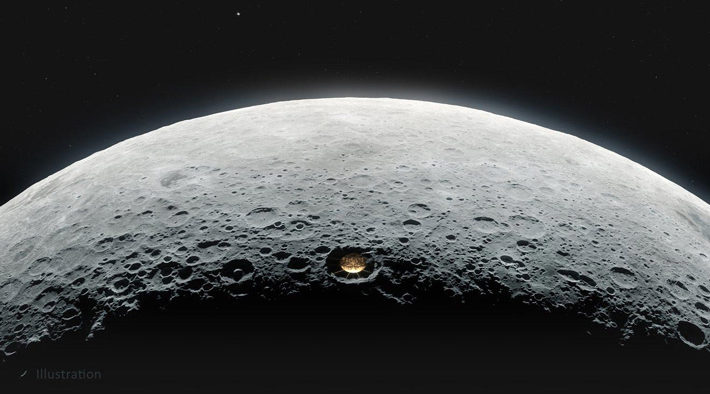Lunar Crater Radio Telescope : A step towards advancement

The idea of the Lunar Crater Radio Telescope, or LCRT, has been in development for ages. The project just received a $500,000 boost upon entering the second phase of NASA’s Innovative Advanced Concepts program.
The lunar telescope would involve robots hanging wire mesh within a crater on the moon’s far side to create a radio telescope. The telescope could measure radio waves from a few hundred million years after the incident that created our universe before the first stars ever appeared.
Benefits of LCRT
The details of the history of our universe have evaded cosmologists, and these radio signals can reveal what happened during that time. Joseph Lazio, LCRT team member and radio astronomer at NASA said, “With a sufficiently large radio telescope off Earth, we could track the processes that would lead to the formation of the first stars, maybe even find clues to the nature of dark matter.”
The Lunar Crater Radio Telescope project could create a radio telescope on the far side of the Moon to carry out unprecedented studies of the early universe. LCRT received additional support as it progresses in @NASA’s Innovative Advanced Concepts program. https://t.co/0yB4PXIj9f pic.twitter.com/MC04VSfugF
— NASA JPL (@NASAJPL) May 5, 2021
Radio telescopes on Earth can’t inquire about this secretive age. The long-wavelength radio waves from that time are reflected by a coating of ions and electrons in our atmosphere. Moreover, casual radio emissions from our noisy societies can restrict radio astronomy as well, bringing the faintest signals.
But on the Moon’s other side, there’s no atmosphere to restrict these signals. Also, The lunar far side could be a key to study exceptional studies of the early universe.
For taking the project to the next level, they’ll use NIAC Phase II funding. They will refine the competencies of the telescope. Also, they will analyze the numerous mission tactics while categorizing the challenges along the way.
For the next two years, the LCRT team will work to recognize other challenges and queries as well. After it, they may be selected for further development.

Currently a student of Economics and Data Science, ITU Lahore.








